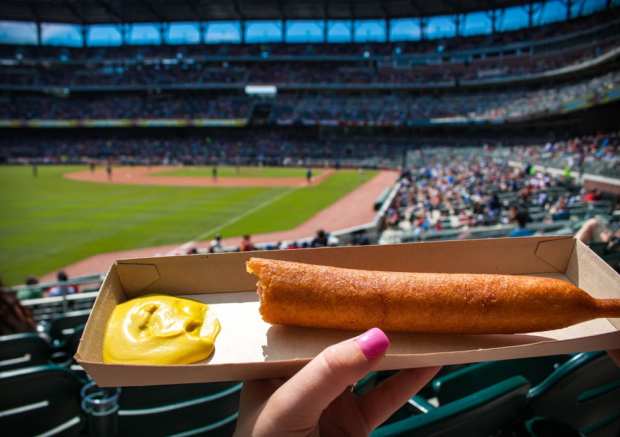How Sports Stadiums Are Undergoing Digital Transformations

No industry is immune to digital transformation. Sure, activities like shopping online, getting food delivered, catching a cab or finding a gig are some of the most front-and-center examples. But recreational pursuits like live sports have also been given a tech makeover.
In the latest version of the Commerce Connected Playbook: Sports And Gaming Edition, PYMNTS examines how the sports world is changing to accommodate a new generation of digital and mobile fans, including the in-person and online sports experiences.
A study from Juniper Research found that mobile ticketing is becoming mainstream in sports, with users predicted to spend $23 billion via mobile in 2023, up from $14 billion in 2019.
For venues, the rise in mobile payments isn’t all about customer convenience – it can also boost revenue.
Look no further than the 2019 FIFA Women’s World Cup, where a majority (51 percent) of transactions were contactless. This had a ripple effect, as Visa found that contactless transactions made outside the stadium also increased by 140 percent.
Oklahoma City’s Chesapeake Energy Arena implemented cloud-based solutions to make payment processes faster and more efficient. In addition to improving the overall customer experience, this has also resulted in a 10.5 percent increase in revenue since the rollout.
Mobile Ticketing
The rise in mobile ticking revenues will be driven by teams’ increased app use for fan engagement. In 2018, many teams switched to mobile ticketing, resulting in nearly 80 million mobile sports ticketing users.
Several U.S. venues are no longer accepting printed tickets, instead enabling consumers to use mobile apps to gain access.
Angel Stadium of Anaheim, home of the Los Angeles Angels, is one of them, encouraging consumers to purchase tickets through Major League Baseball’s Ballpark app.
The Seattle Mariners also launched a mobile-only promotion in March that encouraged users to purchase a Ballpark Pass, a ticket that grants standing-room access to all home games for $99 a month. The team is also relying more on mobile delivery for single-game tickets. Fans can access their tickets through the MLB Ballpark mobile app, though they can also choose to receive their tickets via mail or at will call.
This move to mobile is intended to crack down on counterfeit tickets and to reduce long lines.
In-Seat Ordering
Consumers have acclimated to convenient food ordering and delivery through apps and kiosks, and their expectation for using these tools also extends to stadiums. Between 2016 and 2018, the volume of orders placed through mobile apps grew by 130 percent, according to PYMNTS’ Mobile Order-Ahead Tracker.
In the Visa study, food and beverage accounted for the highest amount of transactions (over 54 percent). And according to Oracle, 68 percent of consumers were highly interested in using a mobile application to order food and beverage, and 63 percent said they would use a self-service kiosk, mobile app or tablet for purchases.
A majority (58 percent) also said they would spend even more if they didn’t have to wait in lines. More than three-fourths (76 percent) added that in-seat delivery would improve their stadium experience. A similar figure (74 percent) said they would like to pick up an order from an express line at a concession stand if offered, implying it’s not an either/or situation. If in-seat delivery is difficult to implement, an express line is almost as good.
On a large scale, Levi’s Stadium in Santa Clara, California is upping its mobile ordering game. The venue, which hosted the Super Bowl in 2016, launched a mobile app that enables guests to place food and beverage orders and pick them up at express windows. Fans using the app can also have drinks delivered to their seats.
Several professional sports teams, including the Detroit Lions, have realized that mobile technology is essential for guests to enjoy their stadium experiences, and are enabling food ordering capabilities through team apps.
In-seat purchases are already being rolled out in many stadiums like BC Place in British Columbia, Canada. Stadium vendor Ready and software POS company Bypass are used to create such experiences.
TIAA Bank Field, home of the Jacksonville Jaguars, is offering a similar solution in conjunction with Bypass and credit card reader provider Clover. The stadium has installed more than 650 Clover terminals.
Stadiums Go Cashless
Cashless businesses have faced a backlash, yet the criticisms that have been leveled at retailers and restaurants haven’t yet affected the sports industry.
Atlanta’s Mercedes-Benz Stadium is pushing cashless policies and increasing their acceptance of mobile and contactless payments. Recently, the stadium announced it will become fully cashless, making it one of the first venues in the U.S. to implement such a model.
Tropicana Field, home of the Tampa Bay Rays, also went cashless earlier this year in hopes of increasing average ticket sizes.
Ahead of any potential criticism, the Mercedes-Benz Stadium also deployed several machines that let customers exchange cash for a prepaid Visa card as an alternative for those who choose not to use their own credit card, debit card or mobile device.
However, fewer than 1 percent of attendees used cash-to-card kiosks.
